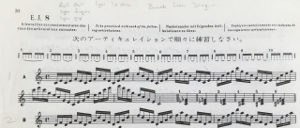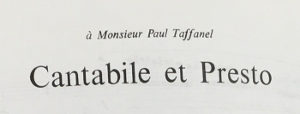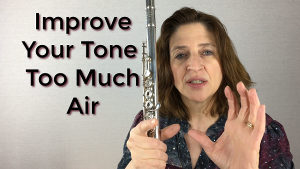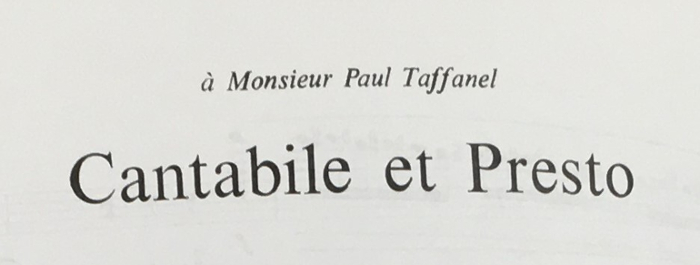Who has difficulty tonguing short articulations in the low register?
Do you?
Or you?
Tonguing in the low register is a bear. It takes a lot of work to get that low register working at optimal levels, especially if it’s short articulations. Hello Cantabile et Presto. Not only is this work a well-known standard, in NY State this is a solo contest option. So, it’s a popular choice for students wishing to place into all-state.
I’ve worked with so many students who play this solo and have such a difficult time with the beginning of the presto. Once they get past that spot, they can take it away at whatever tempo for which they’re ready.
But the beginning is so crucial! It sets the tone (pun intended) for the rest of the piece.
So, what happens when you begin articulating the low register?
Air.
That’s what happens. Air and not tone.
What comes out is just a lot of tongued air. Nice right? Ha! Okay, so there’s no easy answer to this problem.
Just much hard work. The good news is that you can figure it out! The bad news is that it won’t happen quickly.
Let me give you the facts first and then we’ll talk about how to work on fixing it. What happens in the low register when you tongue a low Eb?
Is it just a big old puff of air?
Now, if you hold the note, rather then making it short, then the sound comes in right? That is, all thanks to a little thing called a delay. It is evil and tedious and we all hate it.
Let’s try this in practice.
Lets say you tongue a low E. Essentially what happens to the lot of us is an airy “ta” sound – air – then tone. There is a delay. I know it has something to do with the air and sound waves blah blah blah. All you need to worry about is how to skip that 2nd step, and have the “ta” and pitch to sound simultaneously.
The general problem is that almost always too much air is being released in the low register. Almost. Always.
Now, I’m sure that every good teacher out there has their own unique approach to how to fix that but I’ll give you my favorites.
First and foremost you must have a good handle on support. If you don’t yet, then read my blogs on support and get it going in the right direction.
Once you are good with that, the next step is to set the scene. Fill up with air, place the tip of the tongue on the roof of the mouth and feel the pressure from your support behind the tongue, relax the embouchure and lower the jaw so that the upper lip is over the bottom lip, now tongue the note with little to no expulsion of air.
That’s right.
You tongue the note without letting any air come out. Now I know what you are thinking “a note must have air in order the sound to happen”. Yes, but…..it is a whole lot less then you think. Basically you want to use the air that is behind the tongue not the extra air that you have stored. The less air you blow the better the note will be.
I heard Nina Perlove explain that you actually want to think “inhale” when you tongue those notes. Try that technique. I like to hold the air in rather then inhale. But you may need to try to inhale to get this to work.
My favorite exercise to work on this is called the C chromatic tonguing exercise. Here is how it works:
Begin with a middle C on the flute (C5) then go down chromatically always using C as the anchor in between each tongued note ie: C B C Bb C A C Ab C G C Gb C F C E C Eb C D C Db C
- Breath properly and make sure you have support
- Set the tongue in place and feel the air pressure behind the tongue
- Open the embouchure by lowering the jaw, keep a natural lip shape, upper lip over the bottom to create a nice opening
- Tongue the first note very short
- Hold in the air – do not let it out. If you do this correctly after a couple of notes you will need to let out your air because you have too much air and not enough oxygen stored inside.
- Proceed down the 8va.
- Never hold the note “until you get it.” The object is to make a great sound happen with just a short ta.
This is not a speed exercise. Play each note a couple times to see if it will come out correctly.
 Another really great exercise is is Taffanel and Gaubert’s #8 only a or b. All of #8 is a great exercise but if you are concentrating on your low response then stick with the first 2 in any keys.
Another really great exercise is is Taffanel and Gaubert’s #8 only a or b. All of #8 is a great exercise but if you are concentrating on your low response then stick with the first 2 in any keys.
It can be a very tedious exercise but the benefits are huge. Keep at it. Play it a couple of times per day. You will get it. Then you’ll be amazed at the sound you can achieve!
Have fun!
DoctorFlute
Similar Topics:
Practice with Me Low Register Tonging

FluteTips 19 Low Register Tonguing

Cantabile et Presto for Low Register Tonguing

Improve Your Tone by NOT Playing with Too Much Air

Improve Your Tone on the Flute with Advanced Breathing Techniques

